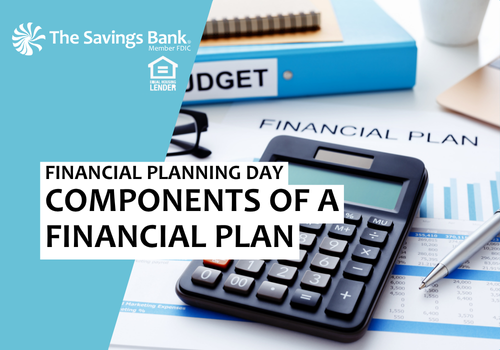Components of a Financial Plan
10/08/2025

Components of a Financial Plan
A robust financial plan is essential for every adult. Everyone’s financial plan will vary widely based on their specific needs and goals, but everyone will have similar components to their plan, as well.
First and foremost, what is a financial plan? A financial plan is a roadmap for your financial future. It details your goals and strategies to achieve them. A good financial plan will cover all aspects of your financial life! The core components of a financial plan are:
- Financial goals – Spell out your short-term and long-term financial goals. This would include things like savings for a vacation, starting a business, or buying a house.
- Income and Net Worth Statement – This is a snapshot of your income and expenditures at the time you are making the financial plan. It may change over time, but you will want to detail your income streams, assets, and liabilities.
- Budget – Using your financial goals and net worth statement, develop a detailed budget. This will be your guide for managing your finances moving forward. There are many helpful budget calculators and resources available online!
- Debt Management – As your personal financial portfolio grows, your debt will more than likely increase. Debt is not always a bad thing. A mortgage can help you build equity and credit. However, you want to make sure you are paying down debt responsibly and prioritizing paying off high interest debts.
- Emergency Fund – Emergency funds are necessary. Life’s ups and downs happen to everyone, and emergency funds ensure you do not have to tap into savings you have designated for your long-term financial goals. If you need help getting started on an emergency fund, we have a blog post to help! Visit: https://www.thesavingsbankohio.bank/about/smartbanking-blog/post.html?cId=106020&title=national-preparedness-month
- Retirement and Estate Plan – It’s never too early to start saving for retirement. Look into what might work best for you, such as a 401K or IRA and begin by figuring out how much money you will need to save to meet your needs once you retire. Also keep in mind planning for your estate. Keep account beneficiaries up to date and decide how your assets will be distributed after death.
- Insurance Coverage – Things like health insurance, homeowner’s insurance, and life insurance protect you in the case of serious damage that can affect your financial wellness.
- Investment Strategy – Investment strategies are all about how you will approach allocating money for further financial growth. Will you invest in the stock market? Will you put your funds in a higher yield savings account?
- Tax Planning – Making money = paying taxes. Make sure you account for tax liabilities in your plan and come up with ways to minimize your tax liabilities.
- Risk Assessment – The financial world is constantly in flux. Come up with contingency plans in the event market changes impact your financial plan. Things like raised interest rates, inflation, and changes to tax codes (like capital gains tax) can seriously increase risks to your plan.
This process will not be a one and done assessment, it will require regular review and adjustment. Many people seek the advice of professional financial advisors or planners. If you choose to do so, please be aware of scams and only seek advice from licensed and reputable firms.
Sources:
https://www.linkedin.com/pulse/components-financial-plan-financial-planning-and-analysis
https://www.schwab.com/financial-planning-collection/8-components-of-good-financial-plan
https://www.indeed.com/career-advice/career-development/financial-plan-elements

